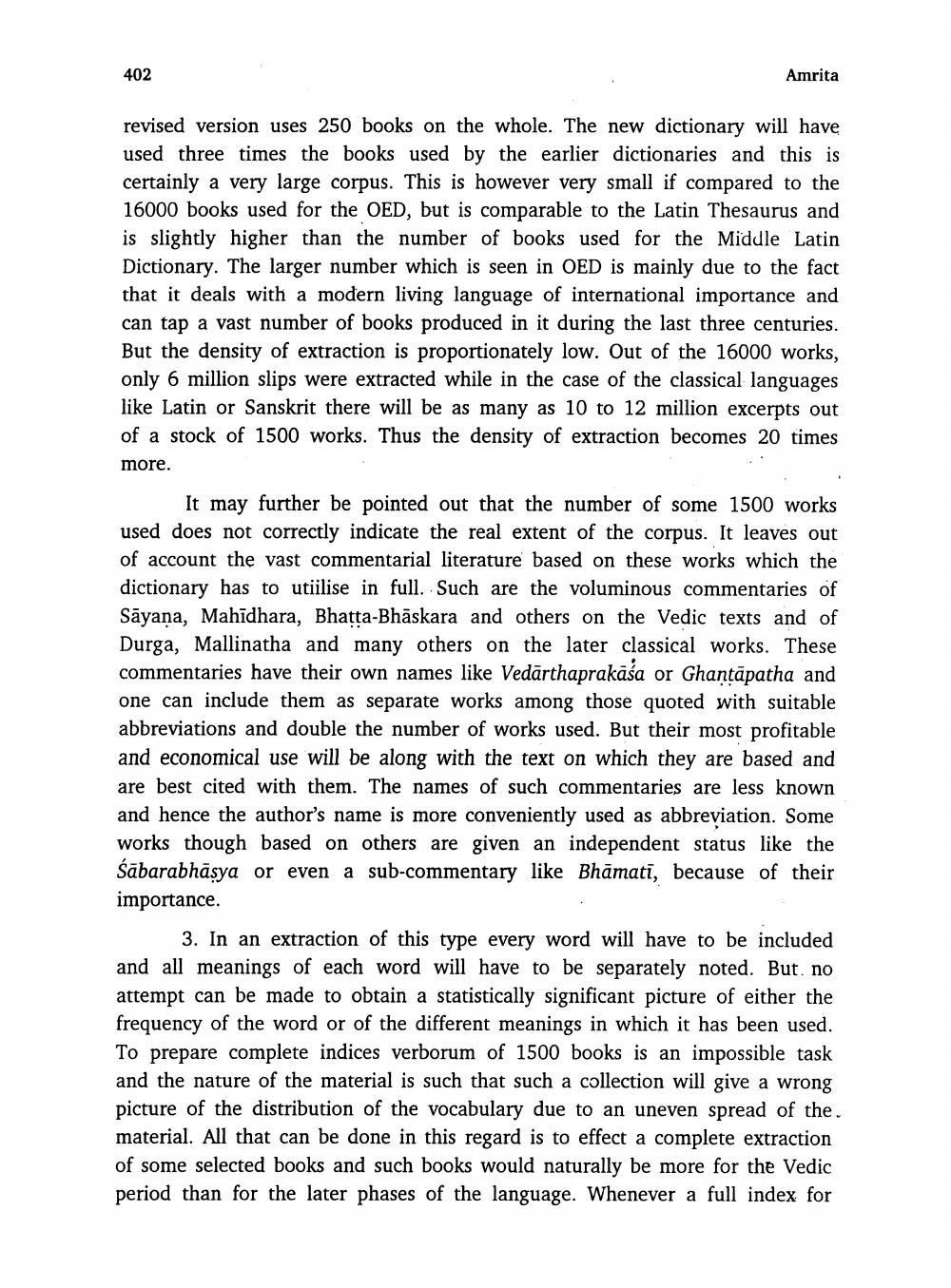________________
402
Amrita
revised version uses 250 books on the whole. The new dictionary will have used three times the books used by the earlier dictionaries and this is certainly a very large corpus. This is however very small if compared to the 16000 books used for the OED, but is comparable to the Latin Thesaurus and is slightly higher than the number of books used for the Middle Latin Dictionary. The larger number which is seen in OED is mainly due to the fact that it deals with a modern living language of international importance and can tap a vast number of books produced in it during the last three centuries. But the density of extraction is proportionately low. Out of the 16000 works, only 6 million slips were extracted while in the case of the classical languages like Latin or Sanskrit there will be as many as 10 to 12 million excerpts out of a stock of 1500 works. Thus the density of extraction becomes 20 times more.
It may further be pointed out that the number of some 1500 works used does not correctly indicate the real extent of the corpus. It leaves out of account the vast commentarial literature based on these works which the dictionary has to utiilise in full. Such are the voluminous commentaries of Sāyana, Mahīdhara, Bhatta-Bhāskara and others on the Vedic texts and of Durga, Mallinatha and many others on the later classical works. These commentaries have their own names like Vedārthaprakāśa or Ghantāpatha and one can include them as separate works among those quoted with suitable abbreviations and double the number of works used. But their most profitable and economical use will be along with the text on which they are based and are best cited with them. The names of such commentaries are less known and hence the author's name is more conveniently used as abbreviation. Some works though based on others are given an independent status like the Šābarabhāsya or even a sub-commentary like Bhāmati, because of their importance.
3. In an extraction of this type every word will have to be included and all meanings of each word will have to be separately noted. But no attempt can be made to obtain a statistically significant picture of either the frequency of the word or of the different meanings in which it has been used. To prepare complete indices verborum of 1500 books is an impossible task and the nature of the material is such that such a collection will give a wrong picture of the distribution of the vocabulary due to an uneven spread of the. material. All that can be done in this regard is to effect a complete extraction of some selected books and such books would naturally be more for the Vedic period than for the later phases of the language. Whenever a full index for




